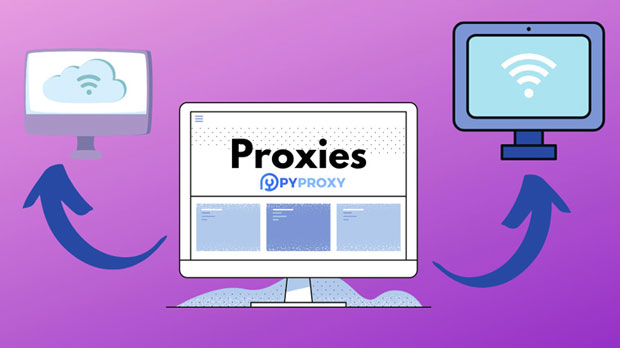When it comes to online security, privacy, and bypassing geographical restrictions, many people turn to proxy unblockers and VPNs. Although both technologies serve similar purposes, they have distinct differences in performance. This article will explore these differences in-depth, examining how each one works, their strengths, and where they may fall short. Understanding these factors is crucial for anyone looking to optimize their online experience, whether for streaming, browsing securely, or accessing region-restricted content. What is a Proxy Unblocker and How Does It Work?A proxy unblocker is a server that acts as an intermediary between a user and the internet. When you use a proxy, your internet traffic is routed through the proxy server, which changes your IP address to that of the server. This allows you to bypass geographic restrictions, protect your identity, and mask your location. However, proxies come in different forms, such as HTTP proxies, SOCKS proxies, and more. While they all achieve similar goals, their performance varies depending on the type of proxy being used. HTTP proxies, for example, can be quite fast but are less secure compared to other types of proxies or VPNs. SOCKS proxies, on the other hand, tend to offer a higher level of anonymity but can be slower because they support more protocols. What is a VPN and How Does It Work?A Virtual Private Network (VPN) creates a secure, encrypted connection between a user’s device and a VPN server, masking the user's actual IP address. This technology ensures that all the data transmitted between the user and the internet is encrypted, providing a higher level of security compared to proxies. VPNs are not just used for bypassing geo-restrictions; they are essential for maintaining privacy and security, especially when using public Wi-Fi networks.VPNs encrypt all traffic from your device, ensuring that no one can intercept your data, even on unsecured networks. The encryption process can slow down your internet speed, especially if the VPN server is far away or if the VPN service uses a weaker encryption method. Performance Comparison: Speed, Security, and Reliability SpeedWhen it comes to speed, proxies generally have the edge over VPNs. Since proxy servers do not encrypt your traffic (or only encrypt it to a minimal degree), they can offer faster connection speeds. This makes them suitable for activities that require quick browsing or accessing content like streaming services without buffering.VPNs, on the other hand, experience a drop in speed due to the encryption process. The distance between your device and the VPN server, the level of encryption, and the server’s load all contribute to speed fluctuations. While high-quality VPN services can minimize this slowdown, proxies are usually faster because they don’t carry the added burden of encryption. SecurityVPNs take the lead when it comes to security. Since VPNs encrypt your entire internet connection, they are much more secure than proxies, which do not encrypt your traffic (or only encrypt a portion of it). This makes VPNs the ideal choice for users who prioritize privacy, especially when using public Wi-Fi networks or accessing sensitive information online.While proxies can hide your IP address and bypass geographical restrictions, they do little to protect your online activities from third-party monitoring. In contrast, VPNs ensure that all your data is encrypted and protected, making them a more secure choice for most users. ReliabilityReliability is another area where VPNs often outperform proxies. VPNs typically provide a more stable connection, as the encrypted tunnel ensures data is transmitted securely and consistently. Since VPNs are designed to offer long-term privacy protection, their servers are often optimized for reliability.Proxy unblockers, by contrast, can be more prone to instability. Depending on the type of proxy and the provider, you might experience slowdowns or frequent disconnections, especially if the proxy server is overloaded or located far from your geographical region. Use Cases: When to Choose Proxy Unblockers or VPNs Proxy UnblockersProxy unblockers are an excellent option for users who are mainly concerned with bypassing geographical restrictions and accessing content in different regions. If privacy and security are not your primary concerns, proxies can be an excellent choice due to their speed and simplicity. They are perfect for activities like streaming, casual browsing, and using region-locked services like Netflix or BBC iPlayer.However, proxies are not recommended for sensitive activities, such as online banking, shopping, or any other tasks where security is paramount. Their lack of encryption leaves your data exposed to potential cyber threats. VPNsVPNs, on the other hand, are ideal for users who require high levels of privacy and security. If you frequently access sensitive data, use public Wi-Fi networks, or are concerned about protecting your online identity, a VPN is the better choice. VPNs are also suitable for activities that involve online shopping, banking, or any form of data exchange where encryption is necessary.Additionally, if you need a stable, secure connection for extended use—such as remote work, video conferencing, or large data downloads—a VPN provides the necessary reliability and protection. Cost and AccessibilityWhen comparing proxies and VPNs, cost and accessibility are essential factors to consider. Proxy unblockers are generally less expensive than VPN services. This makes them an attractive option for users who need a low-cost way to access geo-restricted content without worrying too much about security.VPN services, however, tend to be pricier due to the added encryption and security features. While free VPNs are available, they often come with limitations such as slower speeds, fewer server options, or potential data logging practices. Paid VPN services offer a much higher level of service, but they can be more costly. Conclusion: Which One to Choose?In conclusion, both proxy unblockers and VPNs have their strengths and weaknesses. Proxies are better for users looking for speed and a simple way to bypass geo-restrictions, but they lack the security and reliability that VPNs provide. On the other hand, VPNs offer superior security and privacy but come at the cost of slower speeds.Ultimately, the choice between proxy unblockers and VPNs depends on your specific needs. If security is your top priority, a VPN is the way to go. If you're simply looking to access content from different regions and aren't as concerned about privacy, a proxy may be sufficient for your needs. By understanding the differences in performance, you can make a more informed decision about which technology best suits your online activities.
Jul 15, 2025



































































